So, you just got the home inspection report. Maybe you’re a real estate agent preparing to guide your client through it, or you’re the homebuyer wondering if you’ve just made a terrible mistake. Either way, take a deep breath. A home inspection report isn’t a pass/fail test—it’s an information tool designed to help buyers make confident decisions.
Understanding how to read and interpret the report without unnecessary panic can make all the difference. Here’s how to break it down, focus on what truly matters, and keep the deal moving forward.
Step 1: What a Home Inspection Really Is (And What It Isn’t)
Before diving into the report, let’s clear up some common misconceptions. A home inspection isn’t a test the house “passes” or “fails.” It’s not an appraisal, and it’s definitely not a guarantee that nothing will ever go wrong. Think of it like a Carfax report for the home—your inspector documents what they see on the day of the inspection so buyers can make informed decisions.
What’s Actually Covered?
In Texas, home inspections follow the TREC Standards of Practice (SOP), which outline minimum requirements for what inspectors evaluate. The inspection includes:
✅ Structural systems – Foundation, grading and drainage, roof, walls, ceilings, and floors
✅ Electrical systems – Service panels, wiring, receptacles, and smoke detectors
✅ Plumbing systems – Water supply lines, drains, water heaters
✅ HVAC systems – Heating and cooling equipment, ductwork
✅ Built-in appliances – Dishwashers, ovens, exhaust systems
What’s NOT Covered?
Many buyers assume an inspection covers everything, but that’s not the case. A home inspection is not an X-ray machine—inspectors cannot see behind walls, under floors, or inside pipes. Additionally, it does not include the following:
🚫 Predicting future failures – If the A/C is working at the time of inspection, it gets reported as functional. That doesn’t mean it won’t stop working months later.
🚫 Inspecting areas that aren’t accessible – Attics that are blocked off or crawl spaces that are too tight to enter safely won’t be inspected.
🚫 Moving furniture or personal belongings – If something is covered up, the inspector cannot report on it.
🚫 Reporting on cosmetic issues – Chipped paint, worn-out carpet, or outdated fixtures won’t be noted unless they affect function or safety.
🚫 Verifying code compliance – A home may not meet today’s building codes, but that doesn’t necessarily mean it’s unsafe.
💡 Why This Matters for Buyers & Agents
A home inspection provides a visual assessment of what’s accessible on the day of inspection—nothing more, nothing less. Understanding this upfront prevents unrealistic expectations and makes the process smoother for buyers and agents. The goal is to identify significant issues, not nitpick minor imperfections.
Step 2: Break Down the Report into Key Sections
Most home inspection reports are lengthy, but not every detail is a deal-breaker. Focus on these key sections:
1. Documented Structural & Safety Concerns
Some issues require attention because they impact safety, stability, or function. These include:
- Foundation cracks or movement
- Roof leaks or significant damage observed at the time of inspection
- Electrical hazards such as exposed wiring or overloaded panels
- Plumbing leaks visible during the inspection
- HVAC systems that fail to operate properly at the time of inspection
💡 Agent Tip: If the report highlights major concerns, discuss whether it makes sense to negotiate repairs or request credits. Some issues may be manageable, while others might justify walking away.
2. Systems That Were Operational at the Time of Inspection
A home inspector does not estimate how long an appliance or system will last. Instead, the report documents what was visible and accessible during the inspection. If a system is working properly but shows signs of wear, those details will be included. However, if no deficiencies are found, the system may not be marked as problematic.
💡 Important Reminder: A home inspection provides a snapshot in time. If a system or component fails after the inspection, it does not mean it was overlooked. It simply means no visible deficiencies were present during the evaluation.
3. Minor Maintenance & Common Wear-and-Tear
All homes—new or old—have minor issues that do not affect function. Some examples include:
- Peeling caulk around windows
- Small drywall cracks (often just cosmetic)
- Loose doorknobs or cabinet hinges
- Minor wood rot on exterior trim
💡 Don’t panic: These are normal upkeep items and not reasons to back out of a deal. Remember, purely cosmetic issues are not part of a home inspection.
Step 3: Keep the Big Picture in Mind
Buying a home—especially an older one—means accepting some level of maintenance. The key is to distinguish between what’s an immediate safety issue and what’s just part of homeownership.
Ask these three questions before making decisions based on the report:
1️⃣ Does this issue affect safety or function?
2️⃣ Is it reasonable to ask the seller to fix it or provide credit?
3️⃣ Can I handle this myself after move-in?
Final Thoughts: Stay Informed, Not Overwhelmed
For real estate agents, helping buyers understand what an inspection covers (and what it doesn’t) will lead to smoother transactions and fewer surprises.
For homebuyers, an inspection provides valuable insight into the home’s condition at the time of inspection—but it’s not a warranty or guarantee. That’s why choosing the right inspector matters.
Book Your Home Inspection With Kubara Inspection Services
Looking for a home inspection in Jacksonville, TX, or the surrounding East Texas area? Kubara Inspection Services goes beyond the TREC Standards of Practice, offering more than just a checklist inspection. I take the time to explain my findings, provide extra insight where possible, and make sure buyers walk away feeling confident in their home purchase.
I proudly inspect homes in Tyler, Rusk, Palestine, Athens, Nacogdoches, Canton, Lindale, and anywhere within a 50-mile radius of Jacksonville, TX. As a licensed Texas home inspector (TREC#26495), I focus on delivering clear, detailed reports and empowering homebuyers with the knowledge they need to make informed decisions.
📞 Call or text 903-969-5104 to schedule your inspection, or book online at www.kubarainspectionservices.com today!




.png)